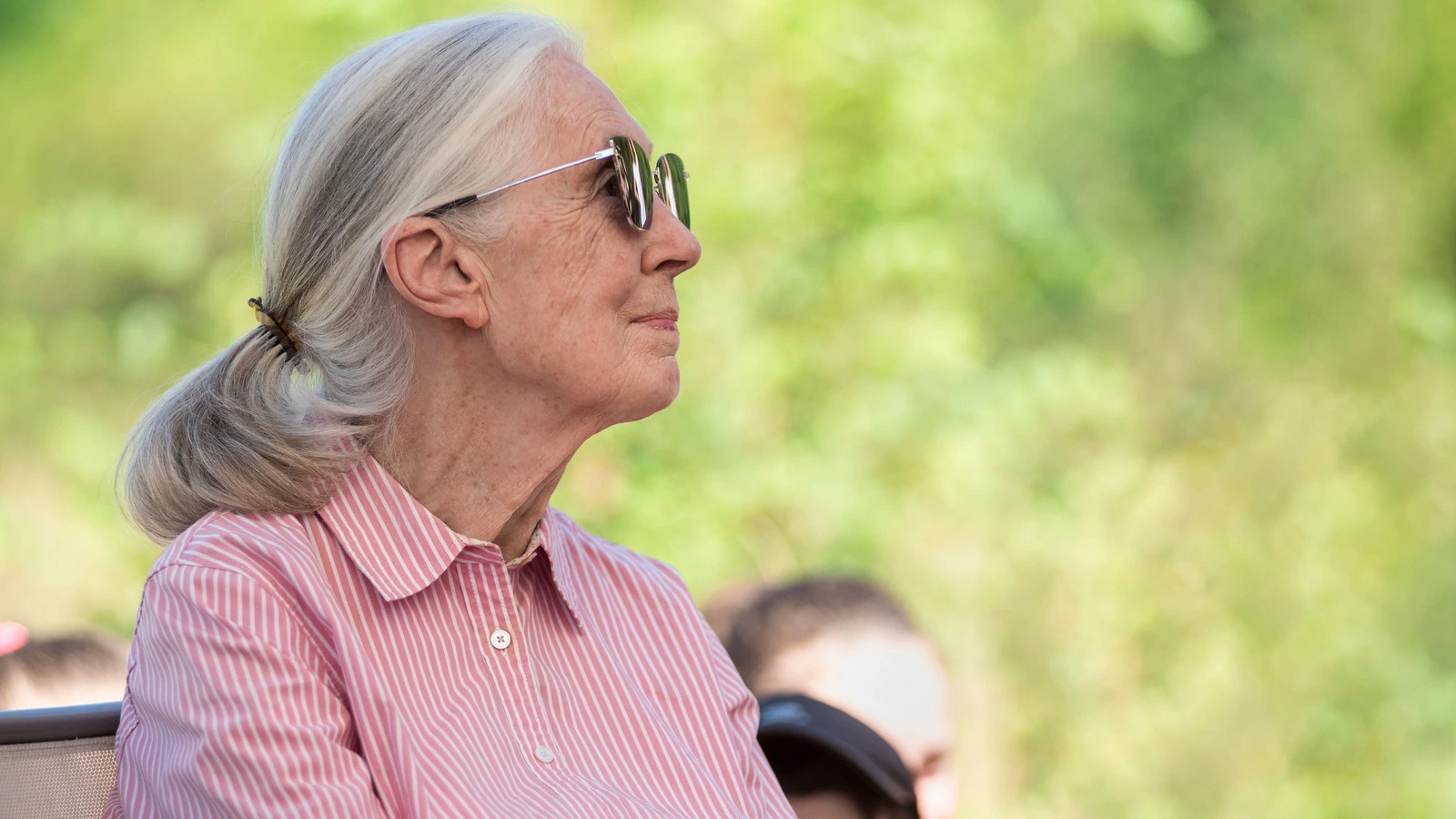Jane Goodall,through her groundbreaking research on chimpanzees at Gombe, a world-famous primatologist, changed what it means to be human. She showed that animals use tools, have feelings, and form cultures. She became a world-famous conservationist, inspiring hope, activism, and generations to protect the planet.
Introduction-How Jane Goodall Made the World a Better Place
Jane Goodall is one of the few scientists who has changed how people see themselves in a big way. She changed the way the world thinks about animals, people, and the fragile web that connects us all through her groundbreaking studies of chimpanzees in the forests of Tanzania and her tireless work to protect wildlife and the environment around the world. She was still traveling, speaking, and inspiring generations to protect the planet even at 91, before she died in October 2025.
Jane Goodall’s childhood and early life inspirations
Jane Goodall was born in Bournemouth, England, in 1934 and grew up during World War II, which was a very difficult time. Air raid sirens shook her childhood home, and she and her mother, Margaret “Vanne” Joseph, and sister Judy often spent the night in a shelter with a steel roof. Mortimer, her father, was sent to fight in Singapore. She later said that this separation made her “barely know him.”
Goodall was the most curious person from a young age. She went into the family henhouse for hours at a time when she was only four years old to find out how chickens lay eggs. Jane’s mother was so happy to see her again that she almost called the police. Instead of punishing her, her mother listened closely. Jane said this was the real beginning of her scientific journey.
Her father gave her a toy chimpanzee named Jubilee, and it became her best friend for life. She said that she once “dreamed as a man” because women weren’t shown as explorers or scientists in books like Tarzan, The Jungle Book, and Dr. Dolittle. She also liked to say that she fell in love with Tarzan, but she was “jealous when he married the wrong Jane.”
Her mother’s motto was “work hard, take chances, and never give up.” This became the guiding principle she later shared with millions of young people around the world.
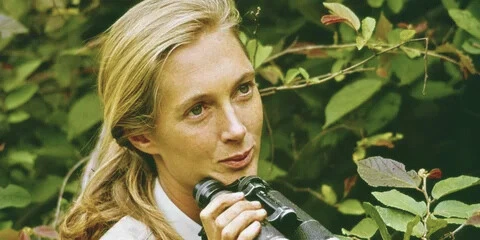
Jane Goodall’s trip to Africa and her meeting with Louis Leakey
Jane Goodall went to secretarial school to learn shorthand and typing because she couldn’t afford college. Then she worked in cafes and film companies, saving every penny for Africa. She got on the Kenya Castle at the age of 23 and headed for Nairobi.
There, she met famous paleoanthropologist Louis Leakey, who hired her as his secretary at first. Leakey quickly saw her potential and thought that her lack of formal training was a good thing because it meant she could observe things with an open mind. He also thought that a woman might be more patient and focused in the field than a man, which would make her a great choice for studying chimpanzees.
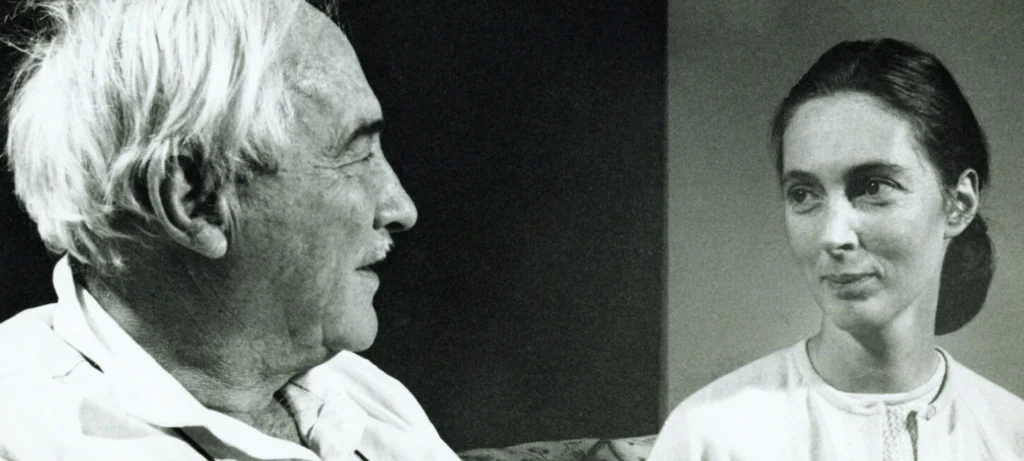
Jane Goodall’s Big Breakthrough at Gombe Stream
Goodall and her mother and a cook got to Gombe Stream National Park on July 14, 1960. The first few weeks were hard because of malaria, thick forests, and not seeing a chimpanzee for weeks.
David Greybeard, a chimp, was the key to her success. He let her see how he acted, which let the rest of the community in. Soon, she saw him use blades of grass to fish termites out of their mounds. Chimps even made tools out of twigs, which is even more amazing. Before that, making tools was thought to be something only people could do. Leakey famously said, “Now we must redefine tool, redefine man, or accept chimpanzees as humans.”
Goodall later said, “I remember that day as clearly as if it were yesterday.”
Her research also showed that chimpanzees were omnivores, hunted monkeys, and had feelings like sadness, compassion, and anger. But she also wrote about their bad side, like their violence and the four-year Gombe Chimpanzee War, in which one group killed another. She said, “I thought they were like us but nicer.”
Jane Goodall and the Gombe Chimpanzees
Goodall gave her study subjects names, like Flo, Fifi, Goliath, Mr. McGregor, and David Greybeard, which was different from what other scientists of her time did. She said they were people with personalities and relationships, which was a very new idea in the 1960s.
One very personal moment was when David Greybeard took a nut from her, looked her in the eye, and gently squeezed her hand. She called it “the perfect communication, before human language.”
She also studied Flint, the first baby born at Gombe after she got there. This gave her a unique look at how chimpanzees grow up and how families work. She saw people kissing, hugging, patting, shaking hands, throwing rocks, hunting with tools, and even cultural oddities like using leaves as napkins or following “fashion trends” like putting grass in their ears.
Her ethical, long-term, and non-invasive methods raised the bar for behavioral science.
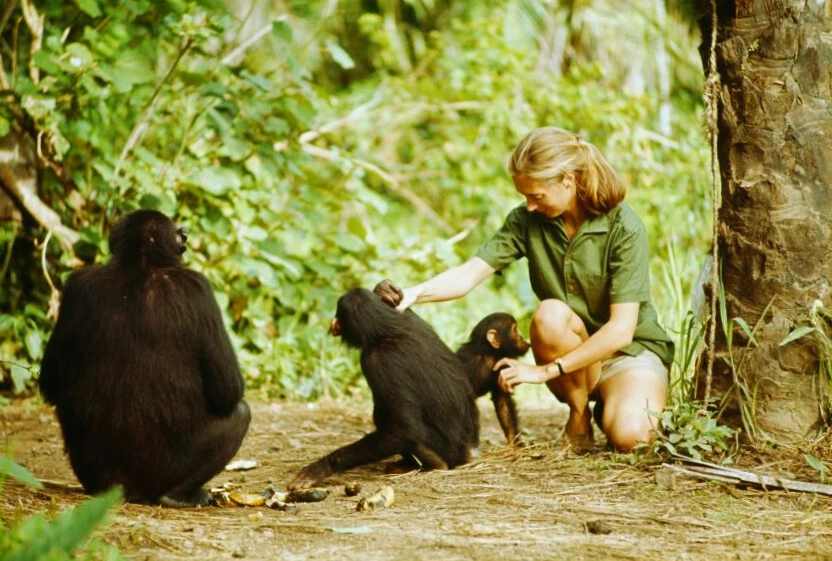
Difficulties, backlash from the media, and problems in school
Goodall started her PhD at Cambridge University in 1962. She was one of the few people ever accepted without a bachelor’s degree. Professors told her that naming chimps and giving them feelings was “doing everything wrong.” She said, “Thank goodness my dog taught me differently when I was a kid.” Leakey told her she had to get the degree so that “science would take her seriously.”
The media also made her work seem like an object.
- A Canadian newspaper said, “Young, Attractive, and Dedicated Chimp-Watcher.”
- The Daily News said, “A tall blonde with more time for monkeys than men.”
- The New York Times said she was “fragile and blonde, with big green eyes and a nose that tilted to the side.”
Later, Goodall said, “If my legs helped me get attention for the chimps, that was good.”
National Geographic published her first article in 1963. Then, in 1965, CBS aired the documentary Miss Goodall and the World of Chimpanzees, which made her famous.
Jane Goodall’s Change from Scientist to Activist
She started the Jane Goodall Institute (JGI) in 1977 to protect chimpanzees and the places they live. The real turning point, though, happened at a primatology conference in Chicago in 1986. She said, “I went as a scientist, but I left as an activist” after hearing stories about deforestation and chimps in pain.
Her work grew to include bigger conservation fights:
- Fighting the palm oil industry, which she said was “the single biggest threat to orangutans.”
- “I will keep fighting the evil forces that are destroying the planet,” he said. She said that governments should not give money to oil, gas, and mining companies while punishing clean energy projects.
- Fighting against the hunting of bushmeat and medical research on chimpanzees.
- They are warning about climate change by pointing to melting ice, flooded islands, worsening droughts, and violent storms. “We have a window of time to change the course of this planet, but it is closing quickly,” she told the Guardian in 2023.
She started Roots & Shoots in 1991 with a small group of Tanzanian students. It has since grown into a network in almost 100 countries, encouraging young people to do things in their own communities to help animals, people, and the environment.
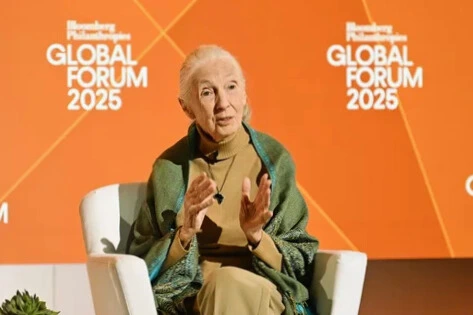
Jane Goodall’s Link to Australia
Goodall had a special connection with Australia and went there often. She said, “If I were a chimp in a zoo, I would want to be at Taronga Zoo.” She praised the zoo’s chimpanzee program. I felt like I belonged here.
But she was very open about what she thought. She spoke out against the poisoning of dingoes, saying in 2019, “What Australia is doing to dingoes is absolutely horrible.” She also talked about how farming was going wrong in the Murray-Darling Basin and how Australia’s extinction crisis was the worst in the world.
Maria Sykes started the Jane Goodall Institute Australia in 2007 to continue her work in Australia. She told Australians on her 2024 Reasons for Hope tour, “You’ve done a lot of damage, but it’s not too late.”
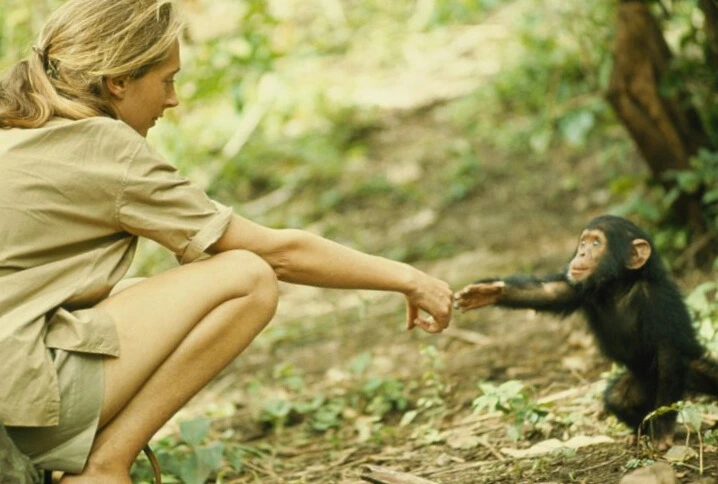
Jane Goodall’s Later Years and Unstoppable Activism
Goodall spoke to governments, businesses, and young people all over the world for 300 days a year, even when she was in her 80s and 90s.
She moved online during the COVID-19 pandemic, where she hosted events and started the Hopecast podcast. She said, “I had Zooms even on Christmas.” It was harder than traveling.
She talked about times when she felt hopeless in The Book of Hope (2021), but she also said, “Then something says there’s still a lot to fight for, and I get extra energy.” I guess it’s because I’m stubborn.
She was sure she would die fighting: “I will die fighting.”
Jane Goodall has received many awards and recognition around the world.
Goodall got some of the most prestigious awards in the world:
- Damehood (UK) in 2004.
- UN Messenger of Peace (2002), where she talked about biodiversity and peace all over the world.
- President Joe Biden gave the US Presidential Medal of Freedom in 2025.
- Awards from Japan, France, and Tanzania.
- Along with Sir David Attenborough and Sylvia Earle, he is one of the “nonagenarian environmental luminaries.”
- Part of the Inspiring Women series, a Jane Goodall Barbie doll was made in 2022.
Gilbert Grosvenor of National Geographic said that her biggest legacy was making it easier for women to get into primatology, a field where women are now in charge.
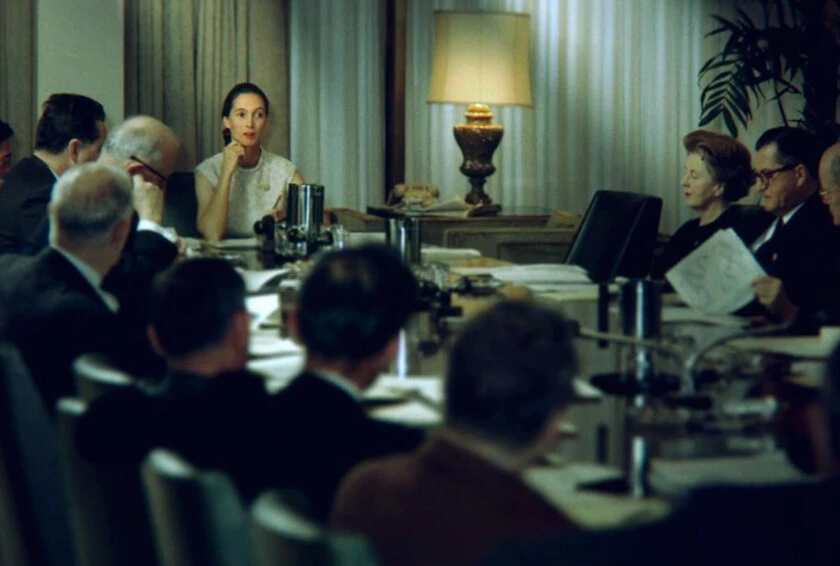
The Personal Life of Jane Goodall
- In 1967, she married wildlife photographer Hugo van Lawick. He sent a telegram that said, “Will you marry me? Stop Love. Stop Hugo.” They had a son named Hugo “Grub” that same year. Grub often lived in a protective cage near the camp for her safety. This was a hard choice, but she later remembered those years fondly. The couple split up in 1974.
- She married Derek Bryceson, the director of Tanzania National Parks, in 1975. He died of cancer in 1981, leaving her a widow. She put it simply: “That was the end.”
- She always said that her mother’s support was the key to her success.
Jane Goodall’s Death and Tributes Around the World
Jane Goodall died in California on October 1, 2025, at the age of 91 while on a speaking tour of the US. She had just been in New York a week before, where she recorded a podcast interview and was going to be in Los Angeles and Washington.
There were many tributes:
- UN: “Worked tirelessly for our planet and all its inhabitants, leaving an extraordinary legacy for humanity and nature.”
- Will McCallum of Greenpeace UK said, “One of the real conservation giants of our time.”
- The International Animal Welfare Protection Coalition (IAWPC) says that this is “one of the most inspiring voices for animals in the world.”
- Maria Sykes of JGI Australia said, “A once-in-a-century person.”
- Cam Kerr, the CEO of Taronga, praised her for sticking with it in a field where men are in charge.
Scientists like Marissa Parrott and Zara Bending, who she inspired, said that her stories and determination helped shape their careers.
READ MORE : Jane Goodall, Legendary Primatologist and Anthropologist, Dies at 91
Jane Goodall’s Legacy-Action and Hope
Goodall changed the way we think about science by showing that chimpanzees are smart, have culture, and feel emotions. This made us rethink what it means to be human. She was a pioneer for women in science, started global conservation movements, and inspired millions with her message of hope.
Her mantra is still a guiding light:
- “Every one of us is important, has a part to play, and makes a difference every day.”
- “We can only care if we understand.” We will only help if we care. “All will be saved only if we help.”
FAQ’S
What is Jane Goodall most famous for?
Jane Goodall is best known for her work with chimpanzees at Gombe, where she showed that they use tools, have feelings, and live in complex societies.
What was Jane Goodall’s theory?
Her theory was that chimpanzees are smart, have culture, and feel emotions like humans do, which goes against the idea that humans are unique.
What does Jane Goodall do today?
She worked on global conservation, ran the Jane Goodall Institute, and inspired young people through Roots & Shoots until she died in October 2025.
What are 5 fun facts about Jane Goodall?
Instead of giving them numbers, she gave them names. Her toy chimp named “Jubilee” made her love animals. She got her PhD at Cambridge even though she didn’t have a bachelor’s degree. She made fun of Tarzan by saying he “married the wrong Jane.” In 2022, a Barbie doll was made to honour her.
READ MORE : Jon Adgemis’ Lavish Lifestyle and $1.8b Hospitality Downfall
